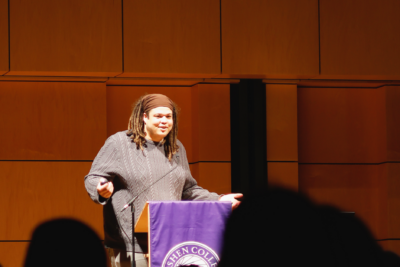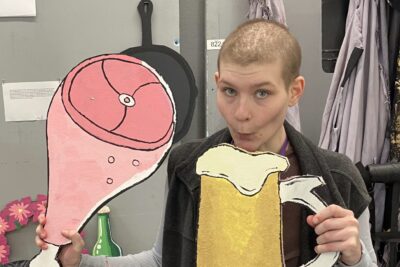The African Children’s Choir graced the stage of Sauder Concert Hall last Tuesday with songs of harvest, celebration, courtship, and hope.
The African Children’s Choir has been in existence for 23 years. The goal of the choir is to “raise the awareness of the light of the orphaned and abandoned, but also showing the beauty, dignity, and potential of the African child.”Since it’s beginning, the choir has expanded greatly. To date, the choir cares for around 7,500 underprivileged children throughout seven countries in Africa: Uganda. Kenya. Rwanda. Congo. Nigeria. Ghana. Sudan. South Africa. The choir is currently partnering with 35 schools and has greatly improved the lives of many children who would have otherwise been left without the chance to reach their full potential.
The opportunity to become a choir member is no short-term commitment. Children are supported with at least one hot meal per day, a school uniform, and their education is paid for, including their college education. Without the choir many of these children would live on the streets.
The children have the opportunity to not only achieve their full potential,but are also able to both learn more about their cultures and share it with others. According to one of the adult chaperones of the choir, who is an ex-choir member herself, “It is a common misconception that all of the dances of Africa are the same. It is not true. Each tribe and country has a different style of dance and song.”
These stylistic differences were displayed in the concert. In a selection from South Africa, entitled “Ujesu Tiathoma,” the children performed a rougher, faster style of music. The song was performed in call and response fashion, as was most of the music. The song is typically performed in animal skins and with warrior weapons of their ancestors, however, for this dance, the kids remained in their normal costumes and donned spears—plastic, of course.
The children performed a hunting song from the Basoga tribe. According to the African Children’s Choir chaperones, in this song, “a hunter returns to her village and declares to her skeptical neighbors that she has died during the hunt and was resurrected. She tells them that she had been told to sit alone and make sure that the antelope did not escape past him. But instead of waiting patiently, she bravely decided to stalk the prey herself. As she made her way towards the trap, she discovered to her shock and dismay that it was a leopard and not an antelope after all! She insists that it mauled and killed her – but since she is clearly still alive, she must have been resurrected. The hunters finally realize that she is bluffing, and make fun of her, telling her that she must have fainted from her fear.”
This dance is formed in complete costume, with an antelope-like animal chasing the narrator throughout the story.
One of the more touching performances from the choir was the selection entitled “Homeland.” With lyrics like, “I’m eager as a bird to fly to journey through the bright blue sky/Back to the house I knew only there’s no one there/Wherever I was meant to be it really isn’t clear to me/Could I grow wise and strong where I was wanted where I belong/Homeland, homeland, deep in my soul I need a homeland/Somewhere I always will be welcome safe on the shore/Sadness, danger, why must I always be a stranger”.
Those of you who didn’t get a chance to attend this event missed out on something special. The African Children’s Choir is far from a typical choir. Their routines include full choreography and drum circles and solos.
The choir has maintained an international status despite its policy of selecting an all new choir each year. The African Children’s Choir has performed on American Idol, Good Morning America, The Tonight Show and Ellen. They have performed for Queen Elizabeth II and alongside Josh Groban, Mariah Carey and Paul McCartney as well as in many of the world’s most prestigious halls.

